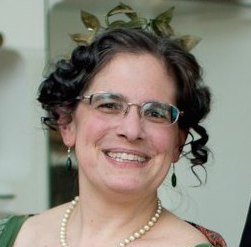- Era: 1910s
- Dance: tango
In the interest of not losing my mind, I’m going to be writing more
short posts interspersed with the longer articles that cover entire
dances. Today, a lovely little move for your 1910s tango.
Many teachers labor under the impression that the “Argentine” consists of one dance only, which is not true, it is a dance of great variety of movements…The Argentine of today embraces about as many varieties as there are dancers, owing perhaps, to the natural desire of our American dancers to be “inventors.”
— F. Leslie Clendenen, Dance Mad, or the dances of the day, St. Louis, Missouri, 1914
Dance Mad is not a coherent manual written by Clendenen; it’s a compilation of dances and manual excerpts (some quite extensive) borrowed from many different authors. No particular author is named for the section on Argentine Tango, from which the above quote is taken. It may be by Clendenen himself, or not. The author decries the variety of tango steps being taught, feeling that most are more stage moves than ballroom moves:
We find there are not more than (5) important figures for our ball room dances…
…and then proceeds to describe no fewer than forty of them, many of which are variant steps under the same name (nine different cortes, five different media lunas). I look through these occasionally for interesting variations and was very pleased with number 6, “El Corte.” No lunging is involved in this corte. The rhythm is “slow, quick-quick, slow, slow”, and the counts and steps are as follows:
1 R forward (4th position)
2 L forward (4th position)
& Close R behind (3rd position)
3 Circle L foot around behind R (3rd position)
4 Circle R foot around behind L (3rd position)
(repeat, reversing feet)
The Argentine Tango is described leading with the right foot, so this move starts on that foot. It works equally well started on the left, however, and is leadable even with a follower who does not know the move, though her circling steps will probably degenerate into plain forward steps unless she looks down and notices what’s going on. A slight diagonal shading of the leading shoulder on “2 &” (quick-quick) will help lead it as a step-close (a difficult move to lead completely straight). The circling steps are beautiful when done with flair – large, sweeping, fast circles traced by the toes as the dancers’ legs come around in parallel. Give it a try!


Leave a Reply